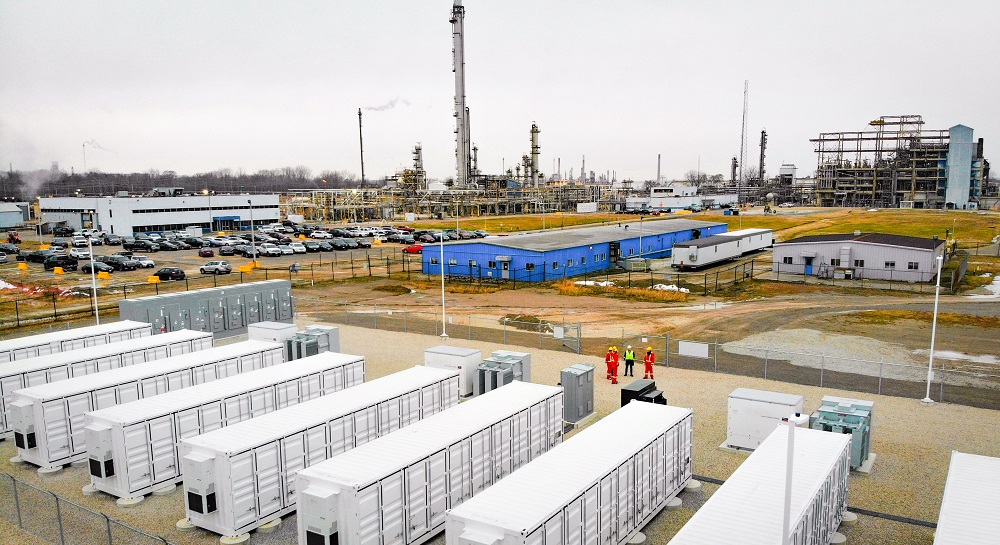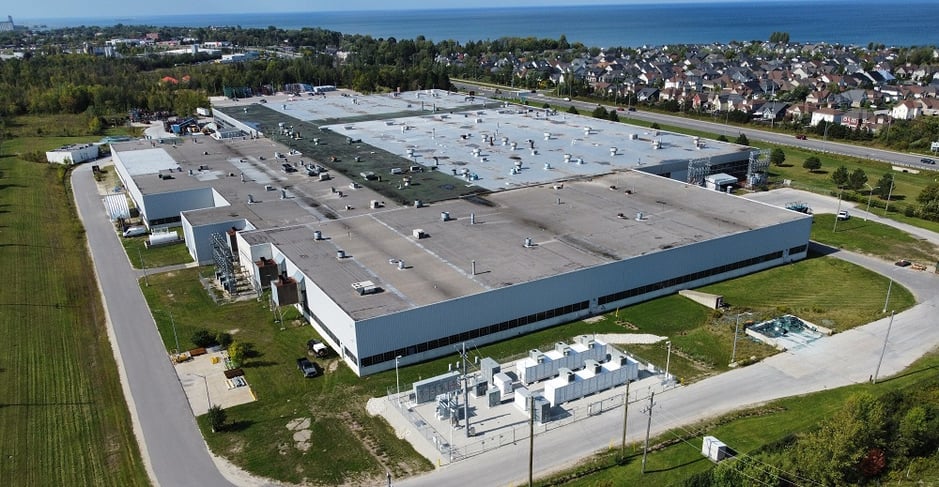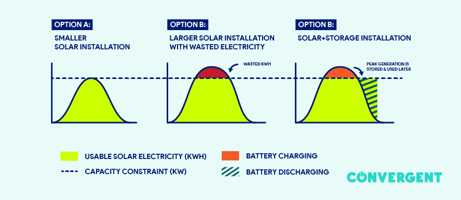Four Misconceptions of Industrial-Scale Energy Storage Systems

The challenge is this: businesses need to reduce their carbon footprints, without breaking the bank. Enter energy storage.
Energy storage, often in the form of battery storage, plays a critical role in the clean energy transition and is a cost-effective tool that companies can leverage to meet ambitious clean energy targets. And as environmental, social, and corporate governance (ESG) initiatives become more important to various stakeholders, from customers to employees, the pressure is on to ramp up sustainability performance without impacting production.
Energy storage not only helps companies to dramatically reduce electricity costs at facilities, but also allows them to take advantage–even optimize—renewable generation, such as solar or wind. In fact, some states such as Massachusetts and Hawaii, have recognized the importance of energy storage by mandating it be collocated with all future solar developments. Many other states have created energy storage tax incentives to increase the amount of energy storage that is on the grid.
If energy storage is so beneficial to the industrial sector, why isn’t everyone running out right now to add storage to their manufacturing facilities? The answer: they should be! Another, more nuanced answer is that there are some common misconceptions about energy storage that may hold businesses back.
As a business development professional at Convergent Energy + Power, a leading developer of energy storage solutions with over a decade of expertise, it’s my job to help businesses evaluate how much money they can save with energy storage and how much they can reduce their carbon footprints.
I spend my days on the phone with facility energy managers and can say that a majority of the people in these roles are interested in the doors that battery storage can open. But misconceptions about energy storage may have precluded them from considering it more seriously … until now.
Four Common Misconceptions of Energy Storage
#1: Batteries will interfere with my critical infrastructure!
This is a common (and understandable) objection from essential facilities like hospitals and data centers, where any blip in power supply could have an immediate impact on patients and customers. Fortunately, Convergent connects our energy storage systems in parallel with your utility.
Connecting in parallel means there is no switchover of any kind when transitioning from grid power to battery power and vice versa, as the flow of electrons from your utility is never fully stopped or fully replaced by battery electrons. When set up this way, these battery storage systems are physically unable to island your facility from its power supply.
#2: I don’t need batteries. I have an Uninterrupted Power Supply (UPS).
While UPS’s and battery storage systems are both supplemental power sources, they serve two very different purposes.
A UPS provides short-term, emergency backup power to a specific load within a facility when its main power source fails. The goal of a UPS is to do this instantaneously so that in the case of a blackout, no equipment is damaged or data lost. A UPS typically supports a very small load relative to the size of the entire facility.
Battery storage systems, however, are designed to support nearly the entire facility load and are connected at the primary bus bar supplying the facility. Although they can be configured to provide emergency backup power, battery storage is most often used strategically, on a regular basis, as a way to reduce a facility’s electricity costs by charging the battery when electricity is cheapest and dispatching it when electricity is most expensive (based on utility tariffs). Batteries deliver significant savings, on the order of six to seven figures off of a facility’s utility bill.
While UPSs are implemented to minimize damage in the face of power supply issues, battery storage systems are implemented to maximize cost savings, with or without renewable generation. Adding a battery storage solution to your system is a strategic move.
#3: I can’t add energy storage – my utility won’t approve.
The vast majority of utilities do not mandate what their customers install behind their meters. When behind-the-meter batteries are discharged, it appears to the utility that the customer is simply experiencing a drop in load, or curtailing operations. In fact, some utilities have specific programs that promote and incentivize energy storage.
Convergent has worked hand-in-hand with utilities for over a decade interconnecting both front-of-the-meter and behind-the-meter energy storage solutions to the grid. A recent example is Convergent’s 5MW / 10MWh battery energy storage system installed behind-the-meter of a glass manufacturing site in Ontario. This system provides the grid with support in meeting customers’ demands, improving grid reliability, and lowering carbon emissions during peak consumption hours.
Energy storage can also participate in Demand Response (DR) programs, thereby reducing peak demand and alleviating stress on the utility’s system; this may defer or avoid utility investments in infrastructure upgrades. California’s three large investor-owned utilities have a mandated program whereby commercial customers receive paid incentives to drop load – or discharge a battery – during grid emergencies.
#4: Battery storage is too costly and doesn’t provide a return on investment.
With global deployment of batteries projected to double six times between 2016 and 2030, batteries are here to stay. The increasing applications for batteries, primarily in the form of electric vehicles, has driven costs down about 80% over the last decade.
However, industrial-scale energy storage systems are still multi-figure investments.
Here at Convergent, we cover 100% of capital costs to build and operate a battery storage system and share in the value generated, providing rewards without risk for our customers. In other words, our customers do not generally invest their own capital into the systems. The battery is “free,” to our customers and the savings are shared. Rest assured, we only make money if our customers do.
Although batteries may not prove economical everywhere, a company’s utility bill, load profile, and location can help determine projected cost savings from a battery storage system.
Start the Conversation Today
For an increasing number of facilities, battery storage offers an effective solution to rising energy costs and pressures to adopt cleaner, greener energy practices.
Now that we’ve cleared up some common misconceptions, it may be time to dive deeper into other variables that will determine the exact financial and environmental impact a battery system—with or without solar—can have at your facility!
I’d love to explore with you and your team if storage makes sense for you. Feel free to reach out to me at ghulten@convergentep.com to start a conversation.

GianPaula is a senior associate on the Business Development team where she supports the origination of behind-the-meter projects in the U.S. and Canada.





